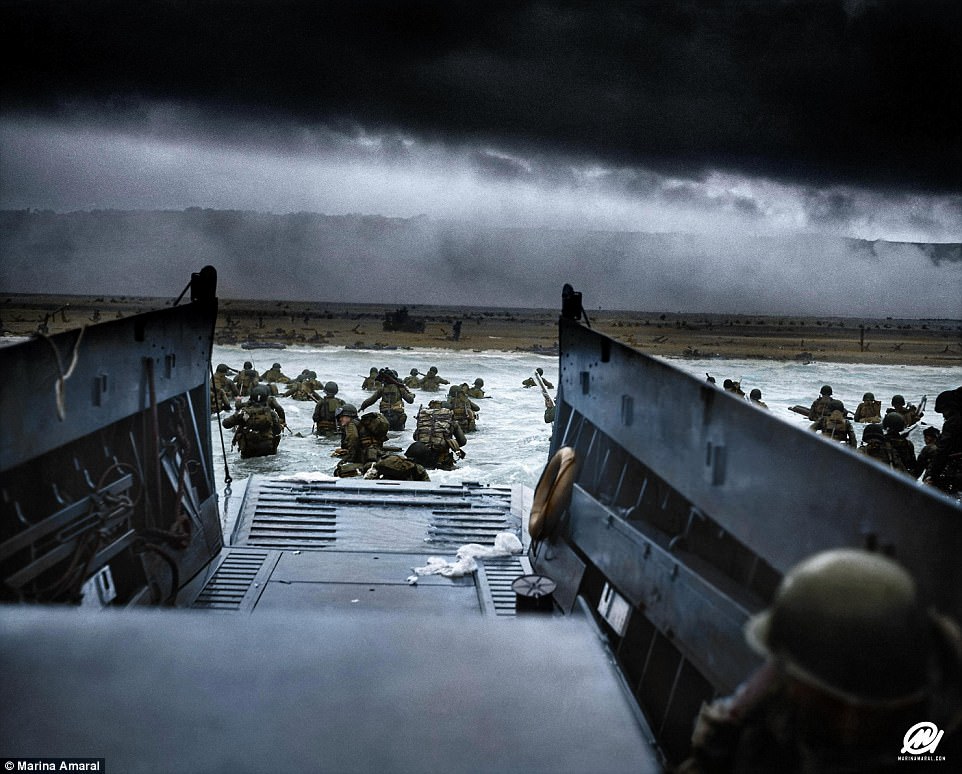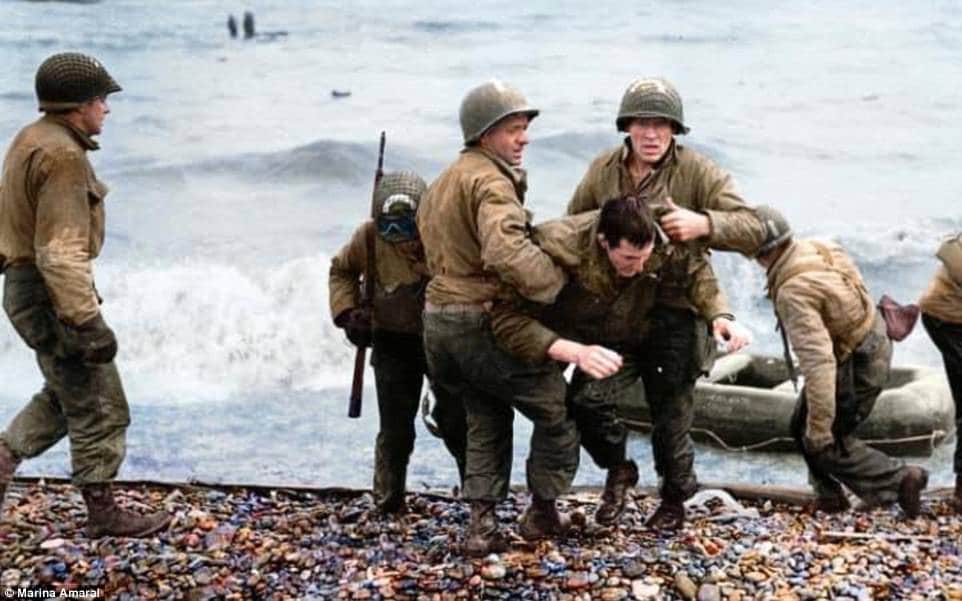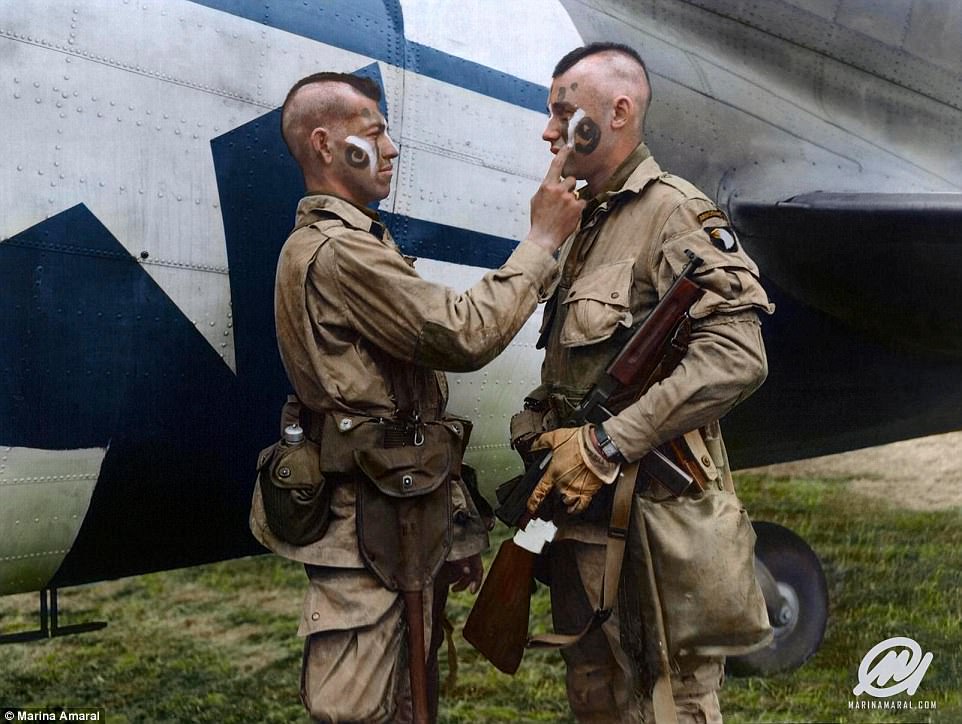A remarkable set of colourised photos has emerged on the 73rd anniversary of the D-Day landings shedding new light on the day Allied troops fought their way on to the beaches of northern France.
Black and white images of brave soldiers wading onto Omaha beach on the Normandy coast and advancing on Nazi positions have been transformed using Photoshop.
Separate pictures show exhausted servicemen being dragged ashore by medics and British, US and Canadian troops and members of a US parachute regiment preparing for the landings.
The colourised images emerged on the 73rd anniversary of Operation Overlord, which saw some 156,000 Allied troops landing in Normandy. It is thought as many as 4,400 were killed in an operation the Second World War Prime Minister Winston Churchill described as ‘undoubtedly the most complicated and difficult that has ever taken place’.

Soldiers from the 16th Infantry Regiment, U.S. 1st Infantry Division wade ashore on Omaha Beach on the morning of June 6 1944. Dramatic images from D-Day have been given a new lease of life after being colourised by a Brazilian artist

D-Day medics From America’s 5th and 6th Engineer Special Brigade help wounded soldiers as they reach Omaha Beach. In the background, survivors of sunken landing craft who reached the beach by using a life raft are helped ashore

Clarence Ware applies war paint to Charles Plaudo in England on June 5, 1944. They were both members of the so called Filthy Thirteen section of the US 101st Airborne Division. The idea came from unit sergeant Jake McNiece, who was part Chocataw and was designed to energise the men for the danger ahead
Brazilian artist Marina Amaral painstakingly researched the images as she gave them a new lease of life with colour using Photoshop.
She told MailOnline: ‘Besides the uniforms, I tried to reproduce the atmosphere of the places and get as close as possible to what these soldiers actually saw with their own eyes.
‘The generation of World War II are almost all gone, so I think it is extremely important to rescue these photos through a process that interests the new generation – so maybe people will be able to better understand what happened. This is what I’ve been trying to do since I began colourising photos two years ago.
‘I like to keep in mind that I’m working with historical facts, and it’s not my job to change that story and make it look the way I want it to look.
See more of Marina’s stunning images on the Daily Mail.

